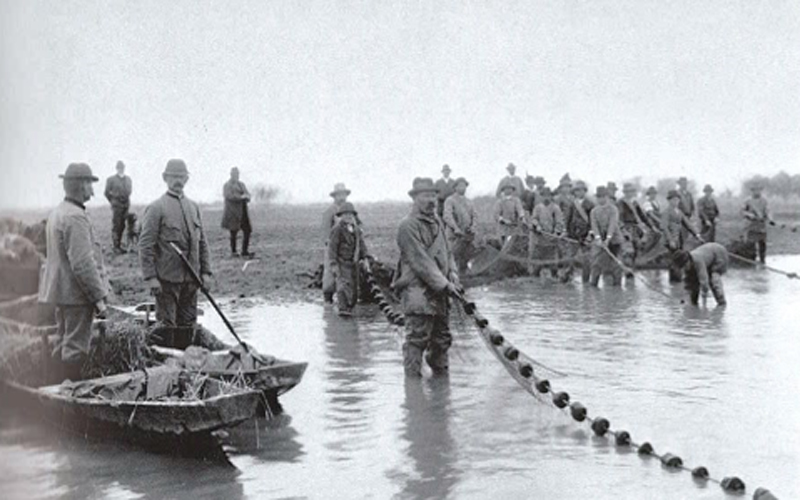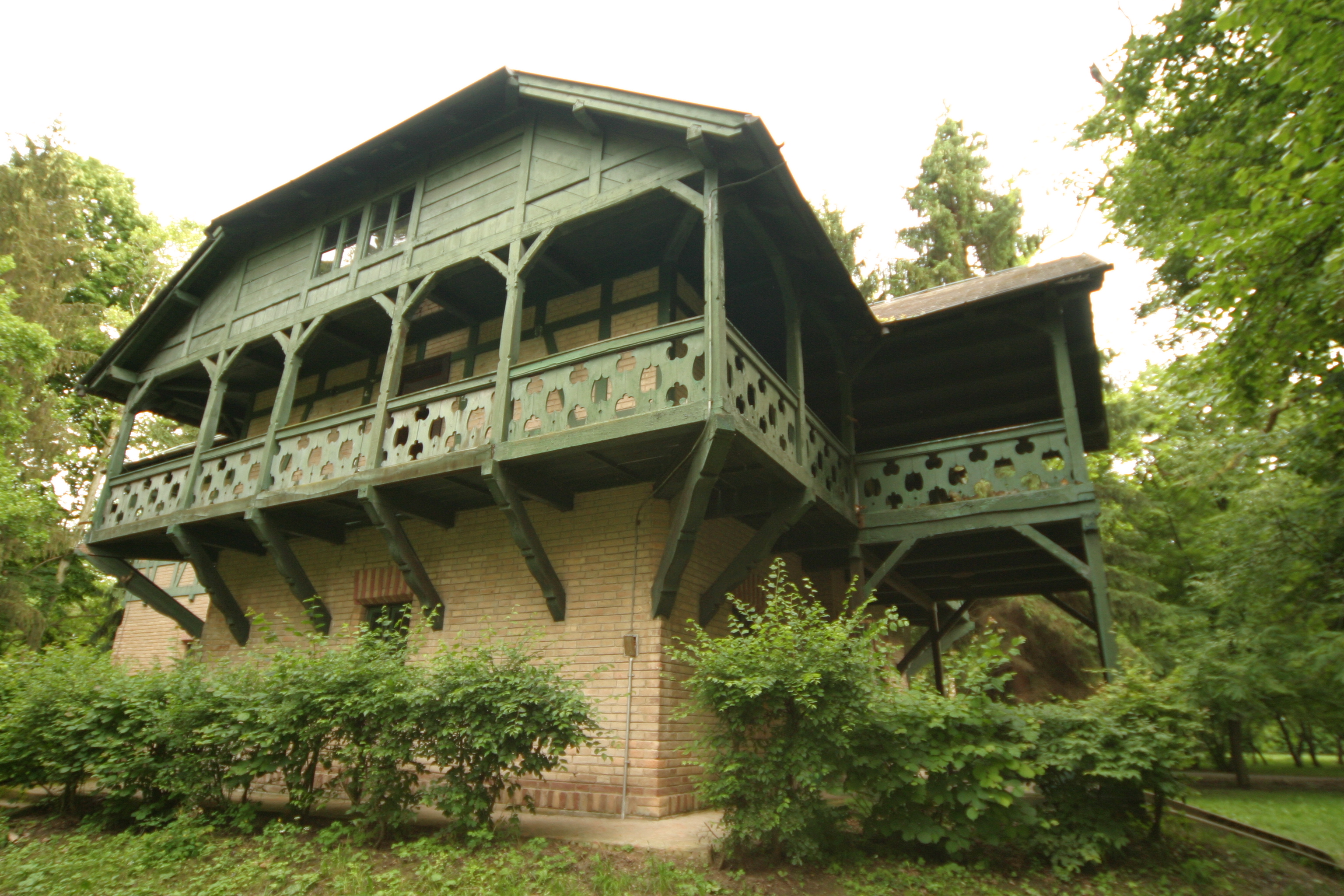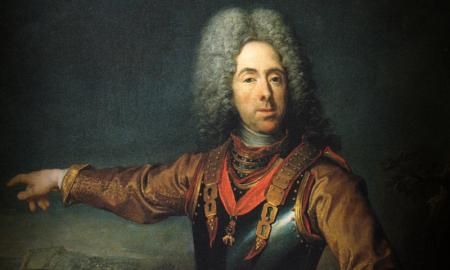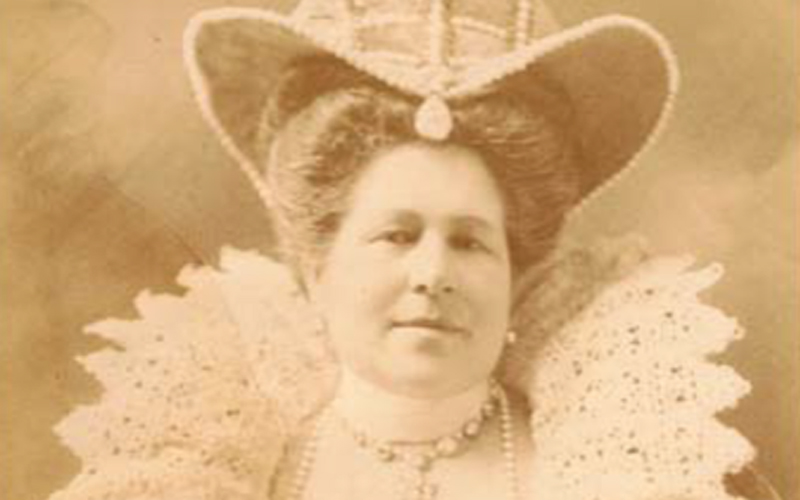Back in the beginning of the 18th century, Eugene of Savoy built a castle on his property in Bilje. This early Baroque complex is still recognizable by its moats and rectangular courtyard. Another attraction of the area is the pastoral architecture of the hunting castle in Tikveš, naturally blending into the landscape of this central part of the region of Baranja.
This residential complex built by the Habsburgs enjoys a Europe-wide reputation as a hunting center.
Kopačevo and fishing

The oldest written records on the circumstances in Kopački rit date back to 1212. One could be forgiven to conclude that not much has changed in the past eight hundred years or so. People living and fishing in the area have also not changed much in their attitudes towards the plant and animal world either. The settlement of Kopačevo is a good example. It is a fishing village located right next to the flood areas of Kopački rit, half immersed in water, half based on land, as has been the case since prehistoric times.
As the fishermen used to say: “If the cow is thin – the fisherman is fat.” In other words, floods meant that livestock ended up without available pastures, while at the same time providing the fishermen with abundant fish catch. Frequent floods shaped the life of the locals quite markedly. According to old fishermen, these areas typically receive two floods per year on average. The first one, the so-called “green flood” as the locals refer to it, tends to occur in the springtime, as the trees become green. The second flood usually hits in August, when the water reaches the level of reed flowers during the flowering period. Spring floods are considerably bigger.
In the winter of 1838, a major icy flood caused a lot of damage. There is one flood that Kopačevo remembers the most, however: the flood of 1876, when a nearby levee collapsed. So strong was the flood, that water dug out a new depression in the area, 20 to 30 meters deep, at a locality called Sakadaš. Floods of 1926, 1965 and 1972 were also particularly strong, with the waters of the Danube and Drava flowing through Kopačevo. With the construction of levees in 1960s, the best fish spawning grounds along the Danube decreased to 1,800 hectares. Channels, waters and recesses of Kopačevo ran dry. The village ended up dry, and remained on the external side of the levee. And water once represented everything here.
In the 1970s, one fisherman from Kopačevo liked to say: “Kopački rit gave us everything: material for our fishing tools, and for the construction of our houses.” He was right, for this area truly gave everything to the locals. Fishermen liked to brag about how one single net thrown into the water can provide tons of fish.
In 1895, the owner of the farm of Belje, Prince Albrecht Habsburg, sued the inhabitants of Kopačevo for having engaged in fishing in the waters of Kopački rit during one flood, claiming that the floodwater came from his property. “He, who is the owner of water, is also the owner of fish in it, no matter where the water goes,” argued the Prince. He lost the dispute, however, and the locals refer to that area as “litigation land” even today.
As early as 1942, writers described the people of Kopačevo as people who “read books and order fine seeds”. Given the fact that they were no longer able to engage in fishing, vegetable growing remained as the only branch of agriculture providing quality yields. The people of Kopačevo turned into masters of vegetable growing, and they remain masters of it until the present day.
According to Labadi Karoly, author of the book “Water Life of Kopačevo”, it is not sufficient to reach regulations and laws in order to preserve biological and natural balance of an area: “One must also discover the traditions and opinions stemming from that area, as factors that impact upon and frame the mode of thinking and the way of life of the locals century upon century. Only those who know about the struggles and cooperation of the locals with nature, and about the ways in which they ensure their survival, can truly respect the beauty of an area.”
Prince Eugene of Savoy, the great military leader
Eugene of Savoy – Austrian prince, general and statesman – marked the end of the 17th and the beginning of the 18th century with his peculiar life and character. Many would describe him as a strategist, first and foremost; however, Eugene of Savoy was also a mathematician, natural scientist and art collector. Since 1697, Eugene of Savoy was the supreme commander of the Austrian army, and later the President of the Imperial War Council in Vienna. He participated in military actions against the Turks, and got a property in the region of Baranja from Emperor Leopold I on account of his military successes in 1698. The Emperor would provide newly liberated areas as gifts to his military associates, allies and deserving noble men, and it is telling that he gave Eugene of Savoy the biggest property of Baranja, with some twenty settlements, including the current area of Kopački rit.
Towards the beginning of the 18th century, Eugene of Savoy decided to build a castle in the village of Bilje (Bellye in Hungarian) on his property in Baranja. The entire estate was named after that settlement, where administrative headquarters of the estate were located.
The castle built by Eugene of Savoy in early Baroque style is still recognizable by its moats and the internal rectangular courtyard. The appearance of the castle continues to convey the character of Baranja of his time, marked by rich forests, plentiful game, fertile vineyards and arable land.
The temperament of Eugene of Savoy certainly marked the region of Baranja, but also the neighboring city of Osijek, where he completed the construction of the complex of Tvrđa. It is precisely from Osijek that Eugene of Savoy went to his military endeavors across the rivers Sava and Danube, and to his famous military campaign in Sarajevo (in 1697), which he captured, pillaged and burned following the conquest. After leaving Sarajevo devastated, he got back to Osijek, with several dozen thousands of Catholics following him as refugees.
He is remembered for his victories over the Turks at Zenta (1697), Petrovaradin (1716) and Belgrade (1717), which marked the end of Turkish conquests in Europe, and which gave Eugene of Savoy the reputation of the biggest military leader of his time.
Tangible heritage

In the picturesque flatland landscape of Baranja, in its central part that includes the Nature Park, one comes across the romantic architectural complex of the castle of Tikveš. In spatial and structural terms, the pastoral architecture of the hunting complex of Tikveš fits in beautifully into the overall landscape of the central part of Baranja, consisting of centuries-old oak forests and wetland and floodplain areas, further enriched by cultivated landscape in the form of meadows and arable land. In this picturesque natural landscape, soon in its history recognized as rich hunting grounds, residential facilities with warehouses and other buildings were made for Albert, the Duke of Saxony, later inherited by the Archduke Charles, Duke of Teschen. The complex remained in family ownership until 1918.
The castle complex itself dates back to the end of the 19th century. It was built by members of the Teschen family line and the Habsburg family. In the course of its history, the castle served as a residential and hunting lodge, well known in Europe and the world, reserved solely for noble guests and rulers. Following the Treaty of Versailles, the complex became property of the Kingdom of Serbs, Croats and Slovenes, later the Kingdom of Yugoslavia. Following a decree by the Ministry of Finance, it obtained the status of state hunting grounds within the state farm complex of Belje in 1920. After World War II, the complex was nationalized, and used solely as a residential hunting center. Josip Broz, the then-president of the country, frequently hunted here with his foreign guests. Since 1991, the complex is owned by the Republic of Croatia.
Within the complex, the central residential facility is the castle itself, built in the second half of the 19th century in the style of romantic historicism. It stands on an elevated plateau, as a self-standing building. The castle is built of bricks, with Biber tiles on its roof and simple ornaments on its facade in the spirit of historicism. The furniture was in line with the prevailing style of the second half of the 19th century, the so-called Alt Deutsch or New Rococo style, marked by imitation of older styles in the design of furniture and interior decoration.
When it comes to the life of the Teschen family, and the environment and atmosphere in which it lived, the photographs taken by Isabella Teschen tell us a lot. Isabella was a big fan of photography. She recorded the life of her family and visits of high-ranking dignitaries, but also scenes from village life of the locals, as well as idyllic landscapes of Baranja. In addition to exploring photography, Isabelle was also a passionate hunter.
In the mid-20th century, another facility was built next to the central residential building, far removed from the original style of the complex. It is linked with the remainder of the complex by corridors.
Another representative building of the Tikveš complex is the hunting castle. Based on the characteristics of its style, it is a countryside villa quite similar in its pastoral character to the buildings of that type from the period of the late 19th and the early 20th century. Several designs were originally proposed for it, and the finally adopted design stems from 1903, which leads us to conclude that the construction itself dates back to that year or somewhat later. The villa is located on a mildly elevated terrain, with carved wood as a pronounced characteristic of the construcion, including the porch construction on the upper floor, as well as the entrance area and the fence. One interesting detail can be seen carved on the front of the building, above the main entrance: the year 1926, together with a horizontal line marking the water level of a major flood that struck Tikveš and the surrounding area that year.
One other significant building of the Tikveš complex is a small chapel built in the spirit of historicism, located south of the complex, with additional facilities built opposite to it. The chapel was built towards the end of the 19th century, as part of the Habsburg family estate, and it is a modest sacral building with a bell on an arch. It was reconstructed on the occasion of the third apostolic visit by Pope John Paul II to Croatia, and contains the Book of Papal Blessing placed on a pedestal, as a gift provided on the occasion of the Pope’s apostolic blessing and a memory of the reconstruction of the chapel. The site is referred to as the Chapel of Papal Blessing.
In the past, it was possible to reach the Tikveš complex not only by road, but also by railway. Built in 1905, the railway even led to adjacent buildings.
There is a bioecological station southwest of the castle as well, built towards the beginning of the 20th century. It originally served as a housing facility for the staff, and as barracks for soldiers who were guarding the site. Over the years, Kopački rit attracted many renowned scientists and explorers. Scientific research began towards the end of the 19th century, initially focusing on the fauna, and eventually expanding to other parts of the local ecosystem. The bioecological station was restored and refurbished in 2003, and it includes four laboratories today.
Prince Eugene of Savoy, the Great military leader

Eugene of Savoy – Austrian prince, general and statesman – marked the end of the 17th and the beginning of the 18th century with his peculiar life and character. Many would describe him as a strategist, first and foremost; however, Eugene of Savoy was also a mathematician, natural scientist and art collector. Since 1697, Eugene of Savoy was the supreme commander of the Austrian army, and later the President of the Imperial War Council in Vienna. He participated in military actions against the Turks, and got a property in the region of Baranja from Emperor Leopold I on account of his military successes in 1698. The Emperor would provide newly liberated areas as gifts to his military associates, allies and deserving noble men, and it is telling that he gave Eugene of Savoy the biggest property of Baranja, with some twenty settlements, including the current area of Kopački rit.
Towards the beginning of the 18th century, Eugene of Savoy decided to build a castle in the village of Bilje (Bellye in Hungarian) on his property in Baranja. The entire estate was named after that settlement, where administrative headquarters of the estate were located. The castle built by Eugene of Savoy in early Baroque style is still recognizable by its moats and the internal rectangular courtyard. The appearance of the castle continues to convey the character of Baranja of his time, marked by rich forests, plentiful game, fertile vineyards and arable land.
The temperament of Eugene of Savoy certainly marked the region of Baranja, but also the neighboring city of Osijek, where he completed the construction of the complex of Tvrđa. It is precisely from Osijek that Eugene of Savoy went to his military endeavors across the rivers Sava and Danube, and to his famous military campaign in Sarajevo (in 1697), which he captured, pillaged and burned following the conquest. After leaving Sarajevo devastated, he got back to Osijek, with dozens of thousands of Catholics following him as refugees.
He is remembered for his victories over the Turks at Zenta (1697), Petrovaradin (1716) and Belgrade (1717), which marked the end of Turkish conquests in Europe, and which gave Eugene of Savoy the reputation of the biggest military leader of his time.
Photographer Isabella von Habsburg

Isabella von Habsburg signed her full name as Isabella Hedwig Franziska Natalia Princess of Croÿ-Dülmen, Archduchess of Österreich-Teschen. She got the title of Archduchess as she married Archduke Friedrich on October 8, 1878 – his full name was Friedrich Maria Albrecht Wilhelm Karl of Austria. Isabella and Friedrich visited their property in Tikveš quite often; today, it is managed by the Kopački Rit Nature Park. They were accompanied by their offspring – eight daughters and one son, as well as by many reputable guests.
A number of dignitaries of that era thus spent time under the roof of the hunting castle of Tikveš; the Emperor himself once visited, and had lunch there in the company of the district prefect and other royal dignitaries. Isabella von Habsburg took interest in photography at the very beginning of history of that medium. She was one of the few women of her era who displayed their work in dedicated photo exhibitions, and she received positive and favorable criticism.
Photographs by Isabella von Habsburg are photo analyses of sorts, recording the way of life in the region of Baranja and its villages. Over 200 photographs (some of which have also been preserved in the Nature Park) provide insight into the life of Baranja at the beginning of the 20th century. The photos cover family life, landscapes, scenes from hunting and fishing, as well as typical village works and customs, embroidery and traditional clothing. The rich photo collection includes photographs of Sophie Chotková and her husband, Archduke Franz Ferdinand of Austria – tragic victims of the assassination in Sarajevo on June 28, 1914. Sophie Chotková – her full name being Sophie Maria Josephine Albina – lived in the Bratislava home of Isabella von Habsburg as a companion of the Archduchess Isabella and her daughter Christine. Franz Ferdinand, the heir to the Austro-Hungarian throne, met her there (his full name being Franz Ferdinand Habsburg-Lothringen-d'Este). His love letters, secretly sent to Sophie, turned into a legend about a love that had to be kept secret, and that forced the heir to the throne to renounce in writing any claim to the Austro-Hungarian throne for his children. Thus the story about Sophie – a friend of Isabella’s, and a Cinderella of sorts from a not-so-distant history – remained recorded on photographs taken by Isabella von Habsburg; photographs of their joint stays in Tikveš still testify about the fashionable life that once pulsated in the castle.
In addition to developing photography as a medium, Isabella von Habsburg also contributed to the emancipation of women in art and society. She organized humanitarian visits to wounded soldiers, donations to people in need, as well as workshops for women dedicated to embroidery and other topics, thus giving her contribution to the process of emancipation of women that continues to be relevant until the present day.
Photographs by Isabella von Habsburg are a valuable artistic legacy, and a document about the life of Baranja and the central areas of Europe. They also represent a foundation for future ethnographic studies.